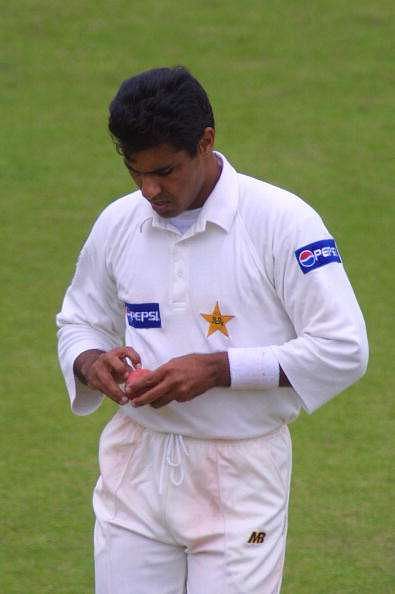
Ball Tampering – What’s all the fuss about?
Sometimes success comes with a bitter aftertaste. That is what the South Africa skipper Faf du Plessis might have realised when ball tampering charges were levelled against him and he was found guilty, moments after the historic series win against Australia, with a Test still remaining.
While he might want to not plead guilty and appeal against the charges, he is the cynosure of all discussions and the rulebooks are once again being rummaged by those who want to understand what the fuss is all about. Even before that controversy has died down, a British tabloid accused Virat Kohli of similar misdemeanour, although it was rubbished by the English cricket fans themselves.
Given no complaint was lodged against Kohli within five days of the commission of the alleged offence, one may not expect any more smoke there but it is not a bad time to review what ball tampering is all about.
Why would one try to alter the condition of the ball?
The dynamics of the cricket ball are quite complicated. The seam divides two equal sections of the ball but as the game progresses, teams try to make the sides as different from each other as possible. They do so by constantly polishing one side of the ball and ignoring the other.
Thus, the ball has a polished side and a rough side. This difference causes the two sides of the ball to have different weights thereby causing it to swing in the air when delivered at a particular pace. The dynamics of the ball also come in handy for reverse swing when the ball starts swinging towards the shiny side, opposite to the conventional swing.
More the contrast between two sides, more prodigious the swing and hence more difficult it gets for the batsman to deal with it.
What the rulebook says
What the rulebook says about ball tampering is quite explicit. As per Law 42.3, players are barred from modifying or interfering with the seam or surface condition of the ball, using any tool to alter the condition of the ball in such a way that it gives them an advantage over the opponent that isn’t fair and from rubbing the ball on the ground.
Over the years, many different incidents of ball tampering have come into light with players trying out different tricks to alter the ball condition, either on the sides or on the seam. Various methods like polishing with saliva from gums have also been used to preserve the shine on the ball longer.
Firsts in the ball-tampering world
Given the way players are hounded by media and cameras, it has become virtually impossible in the modern-day game for a player to do anything with the ball without being noticed. The first player to be suspended for ball tampering, Waqar Younis, would specially vouch for that.
Way back in 2000, match referee John Reid handed Waqar a suspension after he was found guilty of ball tampering in a match against South Africa. Waqar was already warned once for tampering with the ball in a Test series against Sri Lanka a week before that.
Also Read: Cricketers and misadventures with the ball
Along with Waqar, even Azhar Mahmood was found guilty in the ODI against South Africa and along with his skipper Moin Khan, was docked 30% of the match fee. Evidence was found despite his attempts to shy away from the camera while working on the ball.
This was way after Pakistan seamers, Waqar and Wasim were accused by the English press of scuffing the ball up with soft drink bottle caps, although no evidence was ever found. The first reported case of ball tampering though was way back in 1976-77 when Indian skipper Bishan Bedi accused the English left-arm pacer John Lever of applying Vaseline to keep the ball shining for longer.
No evidence was found to conclusively decide whether it was true.
The implications of the ball tampering rule
The rulebook prohibits altering the condition of the playing ball wilfully or intentionally except in two natural ways:
- Using sweat
- Using spit
Illegal ways of altering the condition of the ball
Several ways of altering or attempting to alter the condition of the ball will tantamount to charges of ball tampering. These include many ways.
#1 Scuffing the ball up on one side – A famous example of a player charged with ball tampering by scuffing up the ball was Michael Atherton, who allegedly used dirt in his pocket to scuff up the ball condition.
Faf du Plessis, currently in the midst of a ball tampering controversy has already tasted defamation when in 2013, in a match against Pakistan, his actions led to the on-field umpires adding 5 runs to the Pakistan total. Faf was found guilty of scuffing up the ball using the zip on his trousers.
Vernon Philander was another player who found himself on the wrong side of discussions when footage showed him scratching the seam of the ball in the same match, although no charges were levelled against him.
In a match against South Africa in 2010, England bowlers James Anderson and Stuart Broad found themselves in the middle of a controversy too, although no charges were levelled by the opponent team, South Africa. Broad and Anderson were accused of trying to scuff up the ball by rubbing it on the ground using their spikes.
#2 Modifying the seam, lifting the quarter seam or picking at the threads of the seam are also considered as ball tampering. Waqar was found guilty of lifting the seam of the ball in an ODI against South Africa in 2000, becoming the first player to receive a suspension for tampering with the ball.
Australian paceman Peter Siddle was once accused of doing so in 2012 against Sri Lanka while playing in Hobart and so was Sachin Tendulkar in 2001 against South Africa while playing in Port Elizabeth. Both were cleared later of the charges, although in case of Sachin, there were severe repercussions when Mike Denness, the match-referee suspended Sachin and found himself in a tight corner later on the grounds of racism.
That is why we see players requesting umpires to help them with a loose seam, and it is often seen on television that the umpires pull out a scissor to cut off loosely hanging edges if required. Shoaib Akhtar was another speedster who got into trouble for working on the seam with thumbnails in a tri-series match against New Zealand in 2003 receiving a two-match ban and a fine of 75% of match fee.
#3 Using of foreign material on the ball to alter its condition is another way of ball tampering. Many materials like Vaseline, lip balm, hair gel and chewing gum could be used to tamper with the ball.
In fact, the first reported case of ball tampering was around this method of doctoring the ball. The current controversy around Faf du Plessis involves the charges that he used saliva while sucking on mint to shine the ball. He was found guilty but didn’t receive a suspension.
One of the most gentlemanly of all cricket players, Rahul Dravid, was at one point found guilty of rubbing saliva from a half-eaten jelly on the ball, with footage showing him peeling a jelly-like substance from the ball during a match against Zimbabwe in 2004 in Brisbane. He was fined by the match referee Clive Lloyd.
Conclusion
It is often noticed that umpires ask for the ball every time the players gather either for drinks or for celebrations after the fall of a wicket. Umpires are expected to check the condition of the ball regularly to make sure the ball hasn’t been doctored in anyway.
Ball tampering is a massive assault on the spirit of the game, although, players over the years, have used many ways to circumvent the laws. With so much riding on matches, players have the temptation to tamper with the ball. However, modern-day media rarely lets a single moment during a game pass by when the cameras are not focused on the ball.
That makes it hard for any player to tamper with the ball in any way. Although, a lot of cases end up with the players calling it unintentional and pleading ‘not guilty’, anything that gives one team an unfair advantage should be a matter of grave concern.
That is why even trivial incidents like players deliberately throwing the ball into the ground when they return it back to the wicket-keeper from the outfield are taken seriously from time to time.


